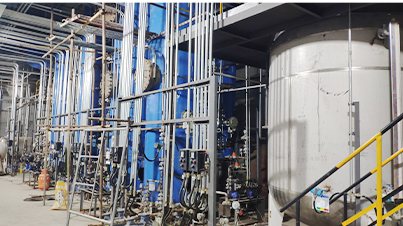isothiazolinone in detergent
Isothiazolinones in Detergents Understanding Their Role and Implications
In recent years, isothiazolinones have become a significant topic of discussion in the realm of household products, particularly in detergents. These biocidal compounds, which are widely used for their effective preservative properties, are often found in a variety of cleaning agents, including laundry detergents, surface cleaners, and dishwashing liquids. However, their efficacy comes with concerns regarding safety and environmental impact, making it crucial for consumers to understand how these compounds work and what implications they may have.
What are Isothiazolinones?
Isothiazolinones, a class of synthetic compounds including methylisothiazolinone (MIT) and chloromethylisothiazolinone (CMT), are primarily used as preservatives. They help inhibit the growth of bacteria, fungi, and algae in water-based products, thereby extending shelf life and maintaining the effectiveness of cleaning agents. Due to their broad-spectrum antimicrobial properties, these compounds have become indispensable in formulations that require prolonged stability.
How are They Used in Detergents?
In detergents, isothiazolinones serve to prevent microbial contamination, which can lead to product spoilage and reduced performance. For example, in laundry detergents, they help keep the product fresh and effective during storage and use. Similarly, in dishwashing liquids, these substances prevent the growth of bacteria that can thrive in moist environments.
Manufacturers incorporate isothiazolinones in low concentrations, following regulatory guidelines to ensure safety
. However, the rising awareness of allergic reactions and environmental issues related to these chemicals has prompted a re-evaluation of their use in consumer products.Safety and Health Concerns
isothiazolinone in detergent

One of the primary concerns surrounding isothiazolinones is their potential to cause allergic reactions, particularly skin sensitization. The prevalence of reported cases has increased, prompting regulatory agencies and consumer organizations to investigate their safety further. In some regions, the use of certain isothiazolinones in leave-on cosmetic products has been restricted or banned, given the linked cases of dermatitis among sensitive individuals.
As awareness grows, many consumers are seeking alternatives free from these preservatives. The increasing prevalence of “free-from” labels on products—indicating the absence of harmful chemicals like isothiazolinones—reflects a shift towards safer cleaning options. Consequently, manufacturers are exploring natural preservatives and alternative formulations to cater to this demand.
Environmental Impact
Beyond human health concerns, the environmental implications of isothiazolinones cannot be ignored. These compounds can persist in aquatic environments and may pose risks to marine life. Studies have shown that they can be toxic to various aquatic organisms, which raises questions about their long-term impact on ecosystems.
As a result, some countries are advocating for a reduction in the use of harmful chemicals in household products, promoting green chemistry initiatives that favor biodegradable and less harmful alternatives. This push towards sustainability is reshaping formulations in the cleaning product industry.
Conclusion
The role of isothiazolinones in detergents underscores the delicate balance between product efficacy and safety. While they provide essential preservative benefits, their potential health risks and environmental consequences prompt ongoing discussions in the regulatory landscape. Consumers are becoming more informed, leading to a palpable shift in the market towards safer, eco-friendlier options.
As the cleaning products industry continues to evolve, manufacturers must navigate these issues carefully, striving to meet consumer demands for safety and sustainability while maintaining product effectiveness. The future may see a decline in the use of isothiazolinones as innovation leads to the development of safer alternatives, ensuring that cleaning products remain both effective and responsible in their use.
-
lk-319-special-scale-and-corrosion-inhibitor-for-steel-plants-advanced-solutions-for-industrial-water-systemsNewsAug.22,2025
-
flocculant-water-treatment-essential-chemical-solutions-for-purification-processesNewsAug.22,2025
-
isothiazolinones-versatile-microbial-control-agents-for-industrial-and-consumer-applicationsNewsAug.22,2025
-
scale-inhibitor-key-solutions-for-water-system-scale-preventionNewsAug.22,2025
-
organophosphonates-versatile-scale-inhibitors-for-industrial-water-systemsNewsAug.22,2025
-
scale-and-corrosion-inhibitor-essential-chemical-solutions-for-water-system-maintenanceNewsAug.22,2025





